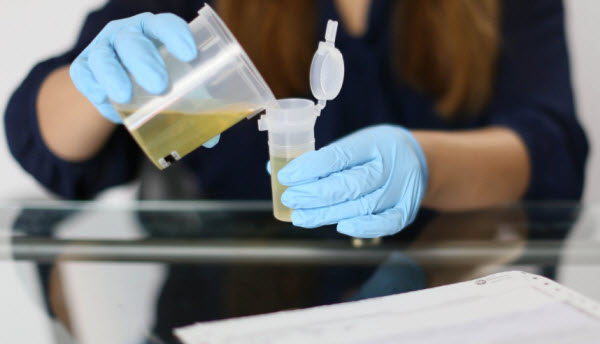Businesses rely on laboratory-based urine drug testing for its proven methodology, capacity to screen for various illicit and prescription drugs, and ability to withstand most legal challenges. Hundreds of urine test combinations can detect virtually any substance you may need to test, with the sensitivity to meet your program’s needs for detection even at the most stringent cutoff levels.
Here are some reasons for making urine drug testing a foundational tool in your program.
Seven (7) urine drug test facts to know
1. Urine testing is the most frequently used method of drug testing. Urine drug testing is the most commonly used drug test specimen type because of its proven methodology and broad range of drug panels. While all drug test specimen types – urine, oral fluid, and hair – have their advantages, urine drug testing is the most flexible and customizable to detect recent drug use.
2. Urine drug testing can be used for various testing situations. Urine drug testing is a flexible and reliable solution for most testing reasons, whether testing is pre-employment, random, or follow-up.
3. Urine testing can detect a wide range of drugs. Quest Diagnostics tests for the following medications: amphetamines, barbiturates, benzodiazepines, cocaine, marijuana, MDMA (ecstasy), methadone, opiates, oxycodone, phencyclidine (PCP) and propoxyphene, synthetic cannabinoids (“K2/Spice”), and synthetic stimulants (“Bath Salts”). Our most commonly requested urine drug test is a 5-panel test that screens for the presence of amphetamines, cocaine, marijuana, opiates, and PCP.
4. Urine testing detects recent drug use. Urine drug testing detects recent drug use in the previous 24 to 72 hours. Keep in mind that drug detection in urine can vary depending on the drug, the amount of the drug ingested, and an individual’s biology.
5. A urine drug test can be completed at a collection site such as a Quest Diagnostics Patient Service Center (PSC), clinic, or doctor’s office. Urine drug testing requires a minimum of 30 mL of urine (45 mL for a U.S. Department of Transportation collection) collected in the privacy of a restroom. A collector then pours the urine specimen into a bottle sealed with tamper-evident tape. The drug test specimen and completed Custody and Control Form (CCF) are sent to the laboratory for testing. Learn more about what to expect at a drug test and read our do’s and don’ts.
6. Some donors try to cheat urine drug tests. While it is the most common drug testing method, urine testing is not foolproof. Donors may try to beat a urine drug test by diluting their sample, adding contaminants, or even trying to substitute another person’s urine for their own during the collection. Specimen validity testing completed by a laboratory ensures a urine specimen’s integrity and filters out cheating attempts. Protocols like measuring pH, creatinine, and specific gravity (when indicated) help identify results inconsistent with human urine.
7. Urine is the only approved specimen type used for federal drug testing. A regulated urine drug test is performed for specific agencies categorized as “safety-sensitive” because of the potential influence of their job on public safety. Safety-sensitive workplaces fall under the Health and Human Services (HHS) or Nuclear Regulatory Commission (NRC) testing authority, or are part of one of the agencies under the U.S. Department of Transportation (DOT). A regulated urine test collection is guided by the DOT’s requirements outlined in 49 CFR Part 40. Drug testing programs aim to filter out drug users and deter drug use in the workplace. Urine testing, like all drug testing methodologies, helps to mitigate potential risks by screening out job applicants and employees who use drugs.
